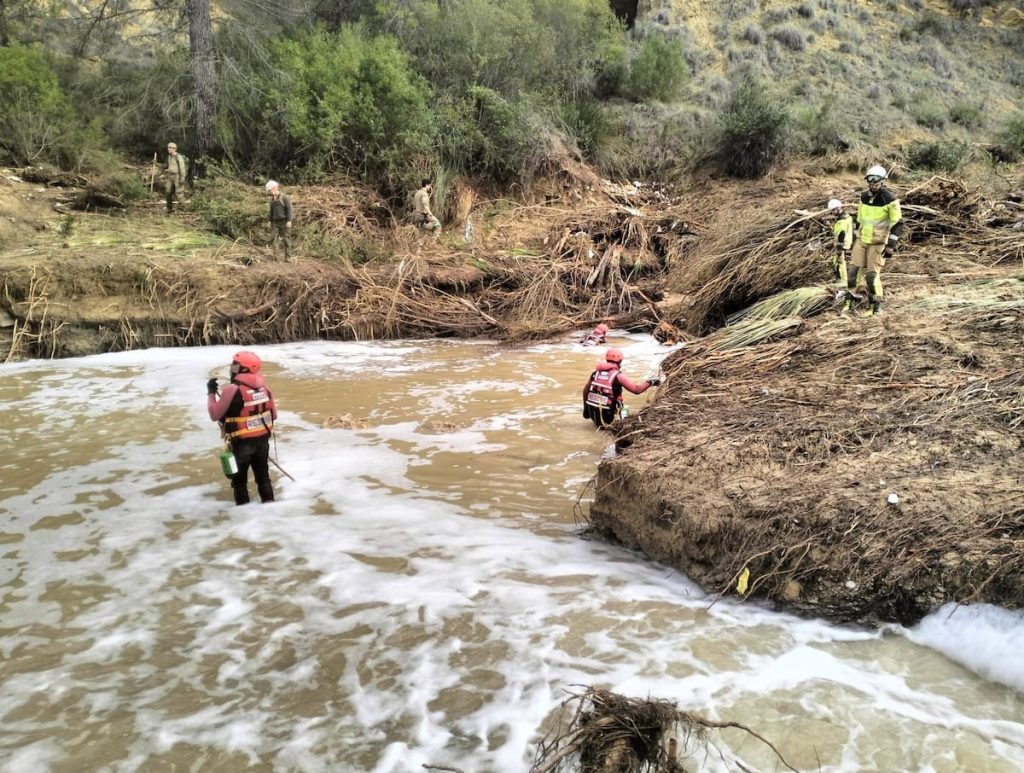Emergency teams will start using ground-penetrating radar to reinforce the search efforts for possible victims. The Director General of Fire Prevention, Rosa Touris, has announced that emergency teams will begin using ground-penetrating radar to enhance their search efforts. This instrument is used to detect objects below the ground level. The priority remains on locating possible victims, as stated by Touris after the latest meeting of the Cecopi, which was attended by the President of the Generalitat, Carlos Mazón, via video conference, and the Minister of Territorial Policy and Democratic Memory, Ángel Víctor Torres. Following surface search operations in the area, ground-penetrating radar will be employed to map the Poyo ravine, analyze the volume of accumulated mud, and trace the possible presence of vehicles.
In addition to surface search efforts, rescue teams are also working on searching for possible victims at sea, with various vessels being coordinated for this purpose. In urban areas, progress is being made on tasks such as removing debris, belongings, and vehicles, pumping water, inspecting building structures, riverbeds, roads, and railways, as well as restoring services like water, electricity, and gas distribution facilities. Regarding mobility, the Generalitat has extended a decree regulating traffic restrictions until Thursday at 23:59 hours to allow heavy machinery to continue operating in support of emergency teams. The affected municipalities by these restrictions include Aldaia, Alaquàs, Picaña, Sedaví, Paiporta, Benetússer, Alfafar, Massanassa, Catarroja, Albal, and Beniparrell.
The use of ground-penetrating radar is a technological advancement that will aid in the search efforts for possible victims, allowing for a more efficient and thorough search process. The coordination of various vessels for possible victim searches at sea demonstrates the multi-faceted approach being taken by emergency teams to cover all possible scenarios. The ongoing tasks in urban areas, such as debris removal and infrastructure inspection, are crucial for restoring normalcy and ensuring the safety of residents in the affected areas.
The involvement of high-ranking officials like the President of the Generalitat and the Minister of Territorial Policy and Democratic Memory highlights the significance of the search and rescue operations in response to the recent events. The focus on locating possible victims reflects the commitment of emergency teams to ensuring that no one is left behind in the aftermath of the disaster. The extension of traffic restrictions to facilitate the operation of heavy machinery demonstrates the dedication to using all available resources to support the rescue efforts.
Overall, the utilization of ground-penetrating radar, coordination of maritime resources, and ongoing urban tasks demonstrate a comprehensive and proactive approach by emergency teams in response to the recent events. The commitment to locating possible victims and restoring normalcy in the affected areas underscores the importance placed on the safety and well-being of the residents. The continued involvement of high-ranking officials and the extension of traffic restrictions further emphasize the gravity of the situation and the dedication to mitigating its impact.


